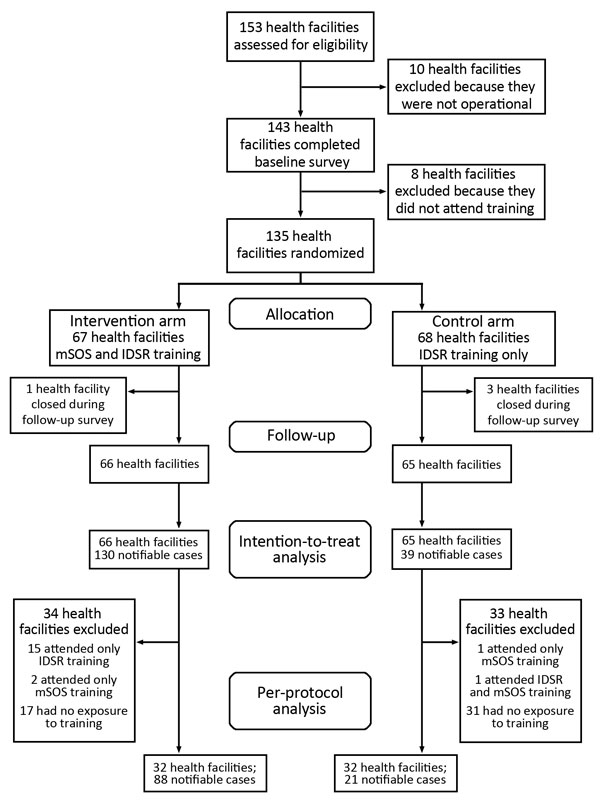Volume 22, Number 4—April 2016
Dispatch
Effectiveness of a Mobile Short-Message-Service–Based Disease Outbreak Alert System in Kenya
Figure 2

Figure 2. Profile of control and intervention health facilities and exclusions during the course of a study of a mobile short-message-service–based disease outbreak alert system (mSOS) in Kenya. IDSR, Integrated Disease Surveillance and Response.
Page created: March 16, 2016
Page updated: March 16, 2016
Page reviewed: March 16, 2016
The conclusions, findings, and opinions expressed by authors contributing to this journal do not necessarily reflect the official position of the U.S. Department of Health and Human Services, the Public Health Service, the Centers for Disease Control and Prevention, or the authors' affiliated institutions. Use of trade names is for identification only and does not imply endorsement by any of the groups named above.